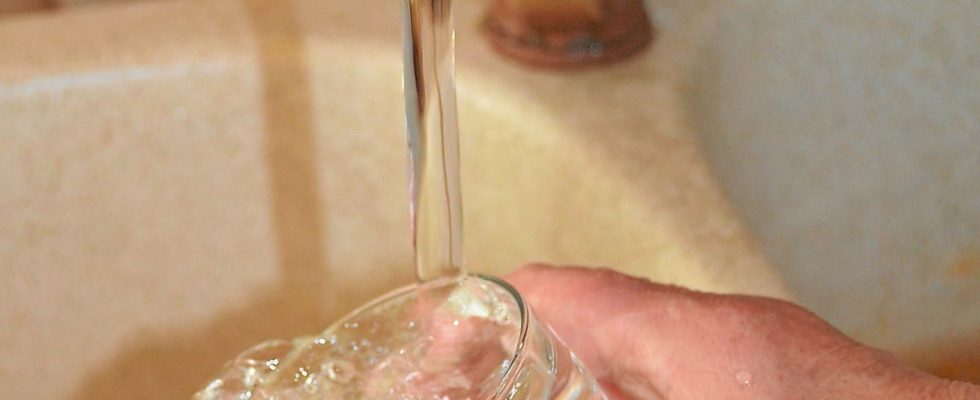In Saint-André-de-Sangonis (Hérault), residents are recommended not to drink tap water. This measure, imposed since September 13 on children and infants under 4 years old, was extended on Wednesday, as a precaution, to the approximately 6,000 inhabitants of this village, west of Montpellier. Because manganese flows more than elsewhere in the pipes of Saint-André-de-Sangonis. Way too much manganese.
The levels in the water distributed in this municipality are beyond the maximum admissible value set by the National Agency for Food, Environmental and Occupational Health Safety (ANSES), i.e. say 60 micrograms per liter (ug/l) for children aged 0 to 3 years inclusive, and 300 ug/l for the general population. The analyses, carried out on October 12, showed in Saint-André-de-Sangonis a manganese content of 55 ug/l at the outlet of the water tank, and between less than 10 ug/l and 1,017 ug /l in the distribution network. “These results confirm the very fluctuating nature of the manganese contents observed in the water distributed on this network, and require the taking of reinforced precautionary measures,” indicated the prefecture on Wednesday. But why are the authorities so afraid of manganese concentrations?
Manganese is an “element of the earth’s crust, like copper, iron, etc. », explains to 20 minutes Jacques Gardon, epidemiologist, researcher at the IRD (Institute of Research for Development) and deputy director of the Hydrosciences laboratory in Montpellier. This trace element is present everywhere, naturally. In rock, soil, air, water… It is one of the most abundant minerals in the environment. On our tables, we find it particularly in mussels, hazelnuts, oatmeal, pineapple or tea. But don’t panic: manganese is essential for the body. “Manganese is one of the rare elements which are both essential and potentially toxic”, at very high doses, indicates the researcher.
Neurological risks in the event of absorption of very large quantities
Manganese is particularly necessary for the metabolism of amino acids, lipids and carbohydrates, and is even said to promote bone formation. But when the body ingests too much, it can be harmful to your health. Above 400 ug/l, explains the Montpellier researcher. Such a high quantity of manganese can in particular lead, according to certain scientific articles which have documented its effects, to problems, in young children, “on their intellectual development or on their attention at school”, in particular, explains the deputy director of Hydrosciences.
If the smallest are more sensitive than the others, it is because they are likely to consume “more water in proportion to their weight”, and they eliminate it “less easily,” indicated the Regional Water Agency. health (ARS) of Occitanie, October 13.
“Infants represent the population most at risk, particularly if they are bottle-fed exclusively from commercial formulas reconstituted with tap water with high concentrations of manganese,” detailed the health authorities. And when the levels exceed the recommended thresholds very, very far? “When the values are very, very high, values that are not generally found in water but in contaminated mining atmospheres, they can cause significant neurological disorders,” underlines Jacques Gardon. Even among adults. But here, we no longer count manganese contents in micrograms per liter, but in milligrams per liter (mg/l). This is much higher than the quantities observed so far in the pipes in Saint-André-de-Sangonis.
Low levels of the alluvial water table could be to blame
But why, in this village in the Hérault valley, are manganese concentrations in water higher than elsewhere? According to the ARS, “the very low levels of the alluvial aquifer exploited by the Saint-André-de-Sangonis well could explain an increase in manganese in the water taken. Manganese reacts with chlorine used to make water drinkable. This reaction forms deposits in the pipes, which correspond to the colored deposits that consumers can observe in tap water on this network. »And the local drinking water plant is not capable, for the moment, of treating such concentrations of manganese.
“Several solutions are possible,” mentioned the ARS services on October 13. The implementation of a treatment, in particular, consisting of a filter would make it possible to retain these deposits. The ARS is supporting the water producer so that an action plan is deployed by the deadline of November 1, aiming both to determine the origin of the high manganese levels and to propose suitable methods to restore the quality of water distributed to consumers. » In the meantime, water checks are carried out regularly in this village in Hérault. And bottles of mineral water are distributed, Monday to Friday, from 1 p.m. to 7 p.m., at the Alternateur.

